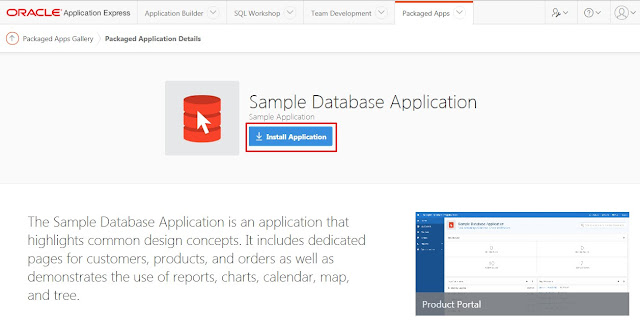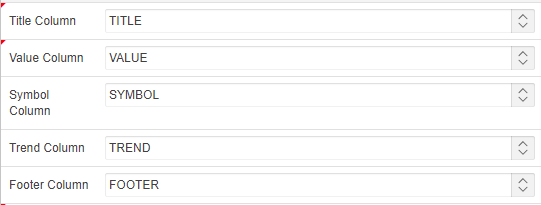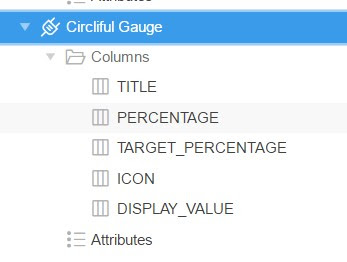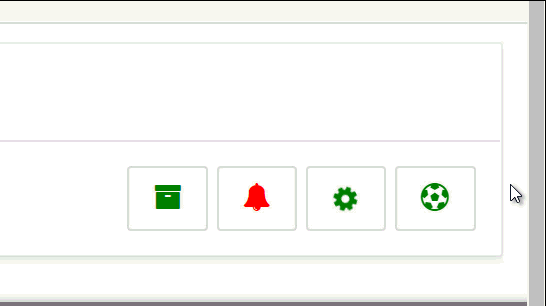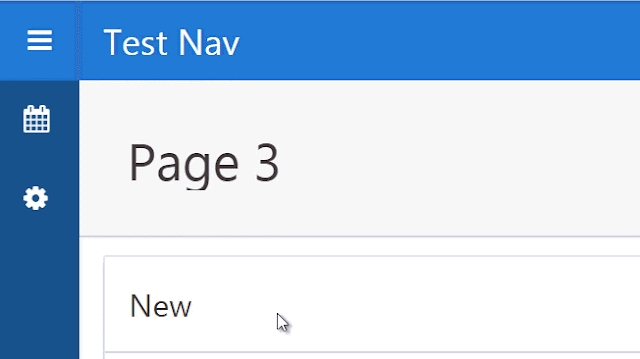This is a three-part Series
- How to Hierarchical Query, Parents, Children and Their Cycles
- How To Create Report in Oracle APEX based on Hierarchical Query
- How to use Hierarchical Query in Tree Plugin
Part-1 How to Hierarchical Query, Parents, Children and Their Cycles
Almost every one on this planet like trees right. Some of us like them as essential part of the world ecological system while others have created a very peculiar taste for it, like the timber mafia and the likes.
Usually you would imagine a tree standing up , however , programmers usually think of trees up-side-down,weird hmm... till it all make sense.😇
An Example of a Hierarchy is an Organization chart representing a hierarchy of employees.
First, Know your terminology.
Here is what we gonna do:
If You Use the Template Query You would at least know what is going on with the Hierarchy, You will get Enough Information to see the Hierarchy.
Uses
So I need employee which has no manager and hence t.mgr is NULL
This will form the Starting base for my Hierarchical query.
As
START WITH t.mgr is NULL
CONNECT BY PRIOR t.empno = t.mgr
We use a simple self-join to find the immediate parent, i.e. each employee's Manager.
The Maximum depth of the Hierarchy
The No of Nodes Per Level
by adding and t.deptno != PRIOR t.deptno found the top-most managers.
So Listing on the Top-Managers
For example, you may want to sum the salaries of all employees reporting to a specific employee
For Each Manager , The Sum of the Manager and Subordinates Salary
For Each Manager , The Sum of its Subordinates Salary
Here are the important Points
Usually you would imagine a tree standing up , however , programmers usually think of trees up-side-down,weird hmm... till it all make sense.😇
An Example of a Hierarchy is an Organization chart representing a hierarchy of employees.
First, Know your terminology.
- You can have multiple trees in a hierarchical table.
- Node
- A row in a table that represents a specific entry in a hierarchical tree structure.
- Root [node]
- The uppermost node/Starting Point in a hierarchical structure.
- It has no parent. and only one root in any given tree
- Parent [node]
- A node that is one level up in a tree. It has a child node below it.
- Child [node]
- A node that is one level down in a tree. It has a parent node above it.
- Leaf [node]
- A node at the lowest levels with no children. As is analogous with the leaf of a tree there is nothing beyond it.
- Leaf Nodes do not all need to be at the same level, but must be without children.
- Level
- A layer of nodes. From the Root and Traversing(hopping from one node to another) through Its children, on each hop of Node downards is the next Level.
Here is what we gonna do:
- The Foremost Clauses, Operators and The Template Query
- Research into Data to find How to Construct your Hierarchy
- A Little Extra Detail
The Foremost Clauses, Operators and The Template Query
The Foremost Clauses and Operators:
- The START WITH condition1
- All rows that satisfy START WITH condition1 are considered root rows.
- If you don't specify the START WITH clause, all rows are considered root rows.
- CONNECT BY condition2 clause and The PRIOR operator
- condition2 must contain the PRIOR operator, which is used to identify columns from the parent row,
- condition2 cannot contain a subquery.
- PRIOR is used to connect each child row to its parent row by connecting manager_emp_id in the child to emp_id in the parent
- The LEVEL pseudocolumn
- Shows the Level of the current row in the Hierarchy
- ORDER SIBLINGS BY Column;
- Sorting at each level while ensuring that child nodes remain underneath their parents, at the same time preserving the hierarchy
The Template Query
The Template Query will cover the following:- Tree Traversal Using ANSI SQL,
- Identifying the Number of Levels
- Identifying Leaf Nodes
- Finding the Path to a Node
- Ordering Hierarchical Data
If You Use the Template Query You would at least know what is going on with the Hierarchy, You will get Enough Information to see the Hierarchy.
Uses
- LEVEL => display which Level is the Current row on.
- CONNECT_BY_ISLEAF => pseudocolumn that returns 1 if the current row is a leaf, and returns 0 if the current row is not a leaf
- LPAD(' ',3*(LEVEL - 1)) || => to have a nice Indented Display with each level
- TRIM(LEADING '>' FROM TRIM(LEADING '=' FROM SYS_CONNECT_BY_PATH(Column, '=>'))) => to have a nice display From the Root Node to the Current Node.
- ORDER SIBLINGS BY Column; => for Ordering on a Column and ensuring that child nodes remain underneath their parent
I have used the scott[y] from Star Trek 😉 , schema throughout the articleJust plugin the Table and Columns Names to see the Result
Select LEVEL,
DECODE(CONNECT_BY_ISLEAF, 1, 'TRUE', 'FALSE') IS_LEAF,
LPAD(' ', 3 * (LEVEL - 1)) || t.ename Name,
TRIM(LEADING '>' FROM
TRIM(LEADING '=' FROM SYS_CONNECT_BY_PATH(t.ename, '=>'))) Path,
CONNECT_BY_ROOT t.ename as "Top Manager"
from emp t
START WITH t.mgr is NULL
CONNECT BY PRIOR t.empno = t.mgr
ORDER SIBLINGS BY t.ename;
PRIOR is used to connect each child row to its parent row by connecting manager_empno in the child to empno in the parent
Research into Data to find How to Construct your Hierarchy
Now it's time play around and research into data to see how will you construct your hierarchy.- Finding Root Nodes
- Finding the Connection/Relationship between Nodes
- Finding a Node's Immediate Parent
- Finding Leaf Nodes
Finding Root Nodes
For Finding Root Nodes, We know that Root [node] The uppermost node/Starting Point in a hierarchical structure which has no parentSo I need employee which has no manager and hence t.mgr is NULL
Select t.empno ,t.ename , t.mgr FROM emp t where t.mgr is NULL
This will form the Starting base for my Hierarchical query.
As
START WITH t.mgr is NULL
Finding the Connection/Relationship between Nodes
As we know that each employee has a manager , except the root node , and the for each employee the manager(empno) is stored in the mgr Column, so we can use this information to construct our relatioship of parent-child.CONNECT BY PRIOR t.empno = t.mgr
Finding a Node's Immediate Parent
We use a simple self-join to find the immediate parent, i.e. each employee's Manager.
Select e.ename "Employee" , m.ename "Manager" FROM emp e JOIN emp m ON e.mgr = m.empno Order by m.ename
Finding Leaf Nodes
Here is a Co-related Subquery using the EXISTS operator, to get the employees who does not have children, i.e. who are only employees but not a manager and thus whose empno is not in the mgr Column.Select * FROM emp e WHERE NOT EXISTS (SELECT 1 FROM emp t where e.empno = t.mgr)Remember I used the CONNECT_BY_ISLEAF in the Template Query , however , here we are talking about research in to data for preparing and comparison for validaty.
A Little Extra Detail
- Finding the Number of Levels
- Checking for Ascendancy/Finding in the Sub-Tree
- Listing Multiple Root Nodes
- Listing the Top Few Levels of a Hierarchy
- Aggregating a Hierarchy
- Identifying Cycles and ignoring it
Finding the Number of Levels
Here are a few queries to findThe Maximum depth of the Hierarchy
Select MAX(LEVEL) from emp t START WITH t.mgr is NULL CONNECT BY PRIOR t.empno = t.mgr
The No of Nodes Per Level
Select LEVEL, COUNT(t.ename) NO_OF_NODES from emp t START WITH t.mgr is NULL CONNECT BY PRIOR t.empno = t.mgr GROUP BY LEVEL;
Checking for Ascendancy/Finding in the Sub-Tree
To see if a Node is Direct or Indirect Ascendant(Parent) of a [Child/Descendant] Node.Let's say If we want to see if a Manager is a Direct or Indirect Manager of an Employee. For example, to see if Jones is a Manager(Direct/Indirect) of Smith or Ward Select LEVEL,
DECODE(CONNECT_BY_ISLEAF, 1, 'TRUE', 'FALSE') IS_LEAF,
LPAD(' ', 3 * (LEVEL - 1)) || t.ename Name,
TRIM(LEADING '>' FROM
TRIM(LEADING '=' FROM SYS_CONNECT_BY_PATH(t.ename, '=>'))) Path,
CONNECT_BY_ROOT t.ename as "Top Manager"
from emp t
WHERE t.ename = 'SMITH'
START WITH t.ename = 'JONES'
CONNECT BY PRIOR t.empno = t.mgr
ORDER SIBLINGS BY t.ename;
Here we START WITH t.ename = 'JONES' ANd Look for 'SMITH' in the Sub-tree , WHERE t.ename = 'SMITH'Listing Multiple Root Nodes
For Example Finding the Topmost Manager of each departmentSelect LEVEL,
DECODE(CONNECT_BY_ISLEAF, 1, 'TRUE', 'FALSE') IS_LEAF,
LPAD(' ', 3 * (LEVEL - 1)) || t.ename Name,
TRIM(LEADING '>' FROM
TRIM(LEADING '=' FROM SYS_CONNECT_BY_PATH(t.ename, '=>'))) Path,
CONNECT_BY_ROOT t.ename as "Top Manager"
from emp t
START WITH t.mgr is NULL
CONNECT BY t.mgr = PRIOR t.empno
and t.deptno != PRIOR t.deptno
ORDER SIBLINGS BY t.ename;
by adding and t.deptno != PRIOR t.deptno found the top-most managers.
Listing the Top Few Levels of a Hierarchy
So Listing on the Top-Managers
Select LEVEL,
DECODE(CONNECT_BY_ISLEAF, 1, 'TRUE', 'FALSE') IS_LEAF,
LPAD(' ', 3 * (LEVEL - 1)) || t.ename Name,
TRIM(LEADING '>' FROM
TRIM(LEADING '=' FROM SYS_CONNECT_BY_PATH(t.ename, '=>'))) Path,
CONNECT_BY_ROOT t.ename as "Top Manager"
from emp t
Where LEVEL <= 2
START WITH t.mgr is NULL
CONNECT BY t.mgr = PRIOR t.empno
ORDER SIBLINGS BY t.ename;
We used the Where LEVEL <= 2 to limit the query to only the First 2 Levels.Aggregating a Hierarchy
For example, you may want to sum the salaries of all employees reporting to a specific employee
Select SUM(t.sal) from emp t START WITH t.ename = 'JONES' CONNECT BY PRIOR t.empno = t.mgrYou may want to consider each employee as a root/Manager, and for each employee print out the sum of the salaries of all subordinate employees.
For Each Manager , The Sum of the Manager and Subordinates Salary
WITH
T
AS
(
SELECT
CONNECT_BY_ROOT ENAME ENAME,
SAL
FROM
EMP
CONNECT BY
MGR=PRIOR EMPNO
)
SELECT
ENAME,
SUM(SAL)
FROM
T
GROUP BY
ENAME;
Select LEVEL,
DECODE(CONNECT_BY_ISLEAF, 1, 'TRUE', 'FALSE') IS_LEAF,
LPAD(' ', 3 * (LEVEL - 1)) || t.ename Name,
TRIM(LEADING '>' FROM
TRIM(LEADING '=' FROM SYS_CONNECT_BY_PATH(t.ename, '=>'))) Path,
CONNECT_BY_ROOT t.ename as "Top Manager"
from emp t
--START WITH t.mgr is NULL
CONNECT BY PRIOR t.empno = t.mgr
ORDER SIBLINGS BY t.ename;
For Each Manager , The Sum of its Subordinates Salary
WITH
T
AS
(
Select LEVEL,
DECODE(CONNECT_BY_ISLEAF, 1, 'TRUE', 'FALSE') IS_LEAF,
t.ename Name,
CONNECT_BY_ROOT t.ename as Manager ,
t.sal SALARY,
TRIM(LEADING '>' FROM
TRIM(LEADING '=' FROM SYS_CONNECT_BY_PATH(t.ename, '=>'))) Path
from emp t
--START WITH t.mgr is NULL
Where CONNECT_BY_ROOT t.ename != t.ename
CONNECT BY PRIOR t.empno = t.mgr
ORDER SIBLINGS BY t.ename
)
SELECT
Manager,
SUM(SALARY)
FROM
T
GROUP BY
Manager;
Here are the important Points
- --START WITH t.mgr is NULL , is commented, Remember when I said, If you don't specify the START WITH clause, all rows are considered root rows. Here is exactly the case , we are considering all rows and their Mangers
- Where CONNECT_BY_ROOT t.ename != t.ename, therefore , employee will consider itself in the salary computation.
- If you find that the With Clause is not applicable in your situation, Just replace it with an Inline View in the from Clause.
Identifying Cycles and Ignoring it
When a node's child is also its parent , then their is a cycle in the Hierarchy.- To Ignore Cycle you can use the CONNECT BY NOCYCLE clause.
- To identify a Cycle you can use CONNECT_BY_ISCYCLE
- pseudocolumn returns 1 if the current row has a child that is also its ancestor; otherwise, it returns 0
- can be used only in conjunction with the CONNECT BY NOCYCLE clause







